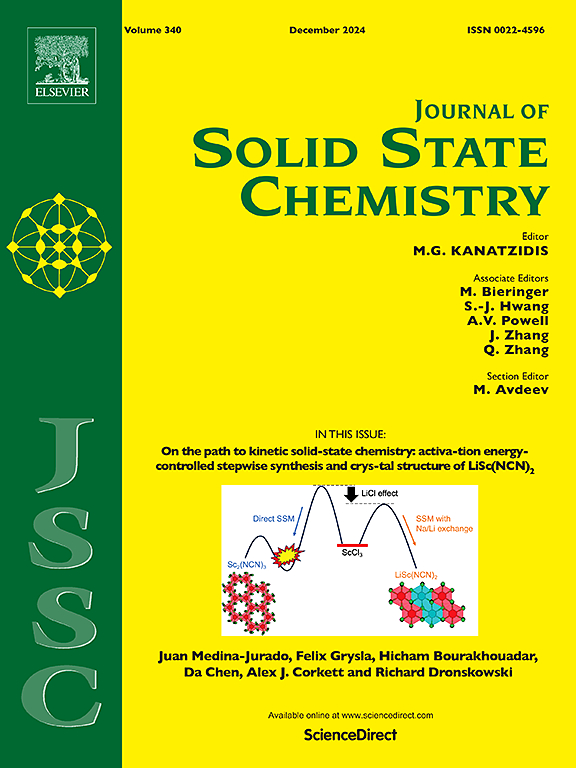Facile synthesis of nanoflower-like NiMoO4/NiO structures for supercapacitive electrode materials
IF 3.2
3区 化学
Q2 CHEMISTRY, INORGANIC & NUCLEAR
引用次数: 0
Abstract
Unique NiMoO4/NiO nanocomposites (NCs) are synthesized by a straightforward hydrothermal process followed by annealing, using Ni(NO3)2·6H2O and Na2MoO4·2H2O as sources of nickel and molybdenum, with urea playing a key role in determining the composition. A systematical characterization explores the variations rule of effect of urea levels on the chemical composition, crystalline structure, and electrochemical characteristics of these nanocomposites. Due to its unique design, the NiMoO4/NiO nanocomposites present a wealth of microporous active sites. Utilized as electrode materials, these nanocomposites demonstrate superior electrochemical properties, attaining a specific capacitance value of 1294.4 F g−1 when tested at a current density of 1 A g−1. They also maintain 86.32 % of their initial capacitance after 5000 charge-discharge cycles. In a distinctive asymmetric supercapacitor setup, labeled NiMoO4/NiO//AC, the peak energy density achieved is 14.39 Wh kg−1 at a power density of 264.67 W kg−1, with a retention of 69.97 % capacity after 5000 cycles, illustrating its long-term cycling stability. This research underscores the transformative potential of NiMoO4/NiO nanocomposites in advancing energy storage solutions.

纳米花状NiMoO4/NiO结构超电容电极材料的简易合成
以Ni(NO3)2·6H2O和Na2MoO4·2H2O为原料,以尿素为主要原料,采用水热法和退火法制备了独特的NiMoO4/NiO纳米复合材料。系统表征了尿素水平对这些纳米复合材料的化学成分、晶体结构和电化学特性影响的变化规律。由于其独特的设计,NiMoO4/NiO纳米复合材料呈现出丰富的微孔活性位点。作为电极材料,这些纳米复合材料表现出优异的电化学性能,在电流密度为1 a g−1的情况下测试,其比电容值达到1294.4 F g−1。在5000次充放电循环后,它们还能保持86.32%的初始电容。在标记为NiMoO4/NiO//AC的独特非对称超级电容器设置中,在功率密度为264.67 W kg - 1的情况下,获得的峰值能量密度为14.39 Wh kg - 1,在5000次循环后容量保持率为69.97%,表明其长期循环稳定性。这项研究强调了NiMoO4/NiO纳米复合材料在推进储能解决方案方面的变革潜力。
本文章由计算机程序翻译,如有差异,请以英文原文为准。
求助全文
约1分钟内获得全文
求助全文
来源期刊

Journal of Solid State Chemistry
化学-无机化学与核化学
CiteScore
6.00
自引率
9.10%
发文量
848
审稿时长
25 days
期刊介绍:
Covering major developments in the field of solid state chemistry and related areas such as ceramics and amorphous materials, the Journal of Solid State Chemistry features studies of chemical, structural, thermodynamic, electronic, magnetic, and optical properties and processes in solids.
 求助内容:
求助内容: 应助结果提醒方式:
应助结果提醒方式:


